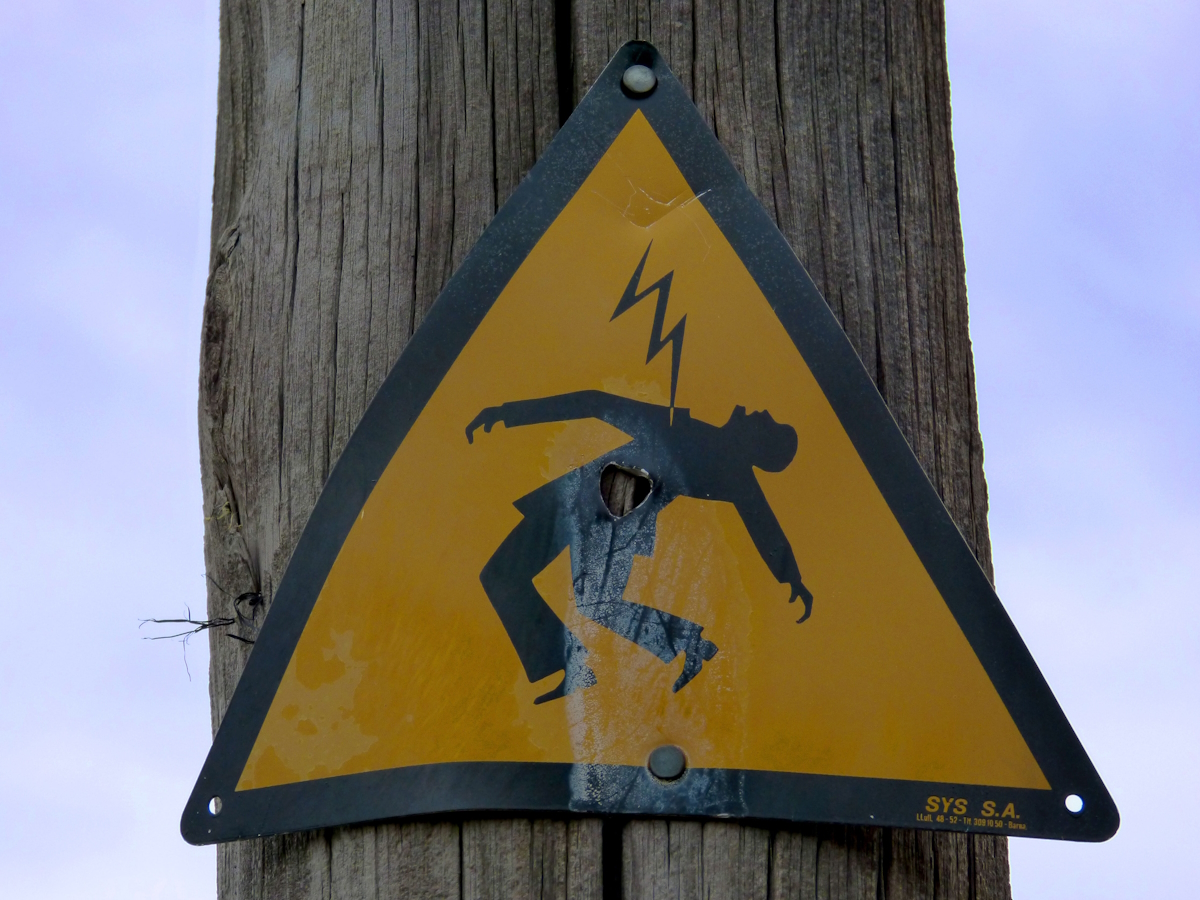These days, thanks to circuit breakers and RCD devices, significant electric shock is unlikely.
Once again, prevention is critical. Make sure the equipment you are using is safe, is suitable for the task at hand and is being used safely.

In the event of a serious shock, the first thing to do is to break the victim’s contact with the current by switching off or pulling out the plug.
Take care for your own safety. If you can’t switch the power off, and it is necessary to move the casualty clear, use a broom handle or wooden window pole or wear rubber gloves to break contact – making sure you don’t end up getting shocked too
If the casualty is unconscious, check that the airways are clear and that the casualty is breathing and has a pulse. If so place the casualty in the recovery position – if you know how. If not, just place the victim on their side, staying with them – the vital thing is to make sure that there is not danger of them swallowing their tongue or possibly swallowing vomit – both of which could happen if they are lying on their backs.
If the casualty is not breathing but has a pulse artificial respiration is essential. If there is no breathing or pulse, call an ambulance and, if trained, begin CPR (Cardio-Pulmonary Resuscitation).
